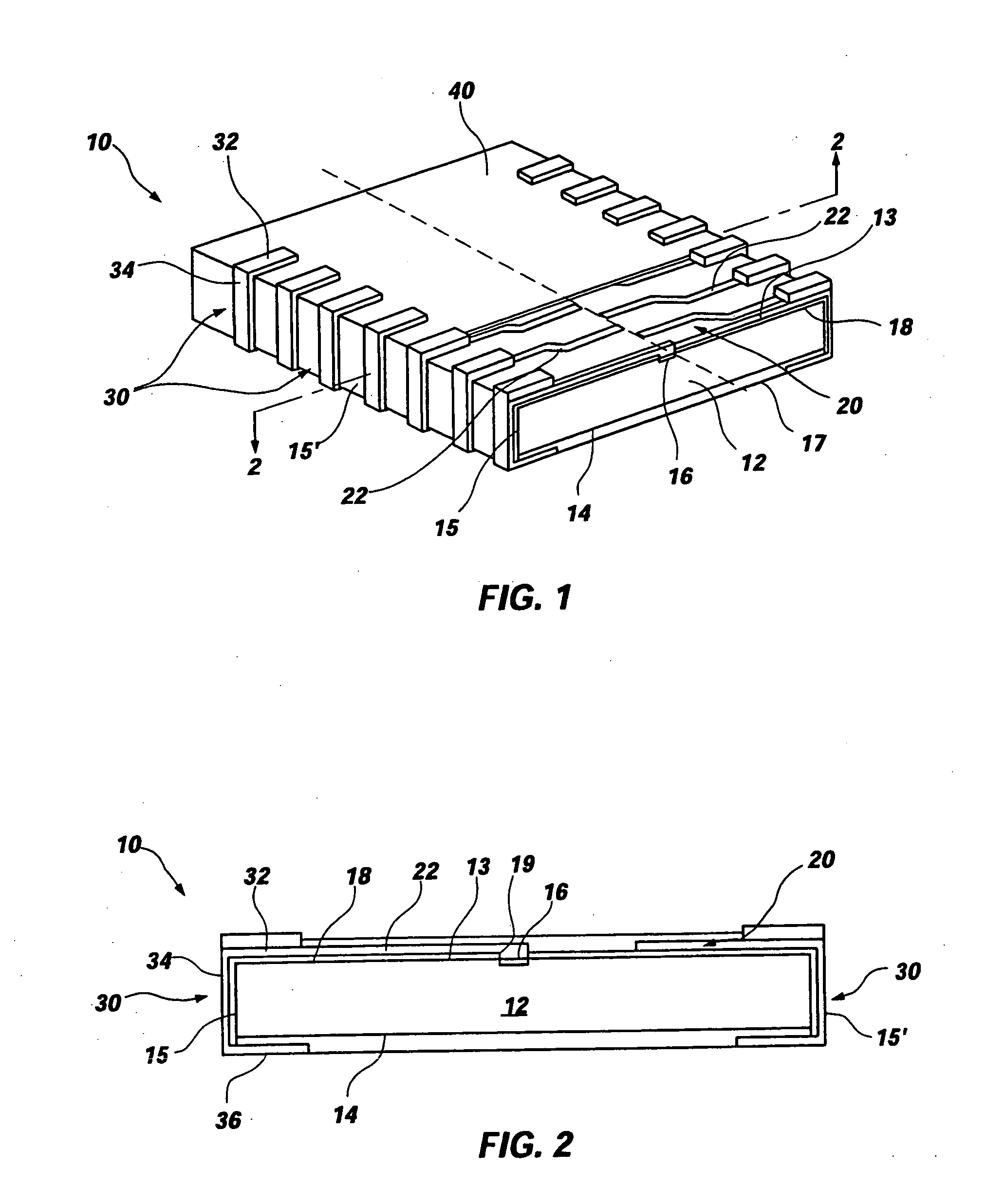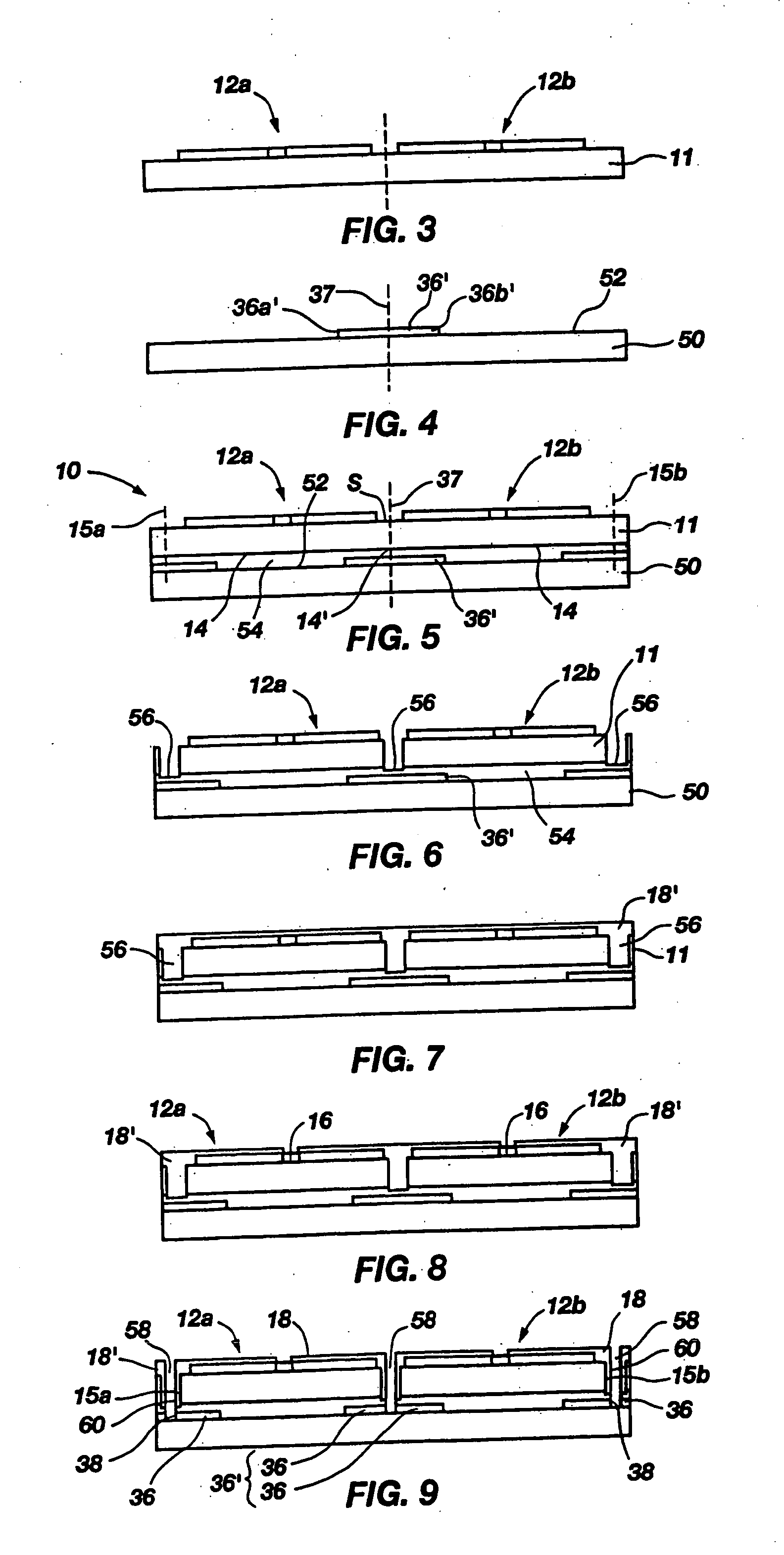Castellated chip-scale packages and methods for fabricating the same
a chip-scale package and chip-scale technology, applied in the direction of semiconductor devices, semiconductor/solid-state device details, electrical apparatus, etc., can solve the problems of undesirably large amount of real estate on the carrier substrate, undesirably large distance between semiconductor device packages, and undesirably high profile of the assembly
- Summary
- Abstract
- Description
- Claims
- Application Information
AI Technical Summary
Benefits of technology
Problems solved by technology
Method used
Image
Examples
Embodiment Construction
[0041] With reference to FIGS. 1 and 2, an exemplary embodiment of a chip-scale package 10 that incorporates teachings of the present invention is depicted. Chip-scale package 10 includes a semiconductor device 12, a redistribution layer 20 over an active surface 13 thereof, and contact pads 30 that extend from redistribution layer 20, around an outer peripheral edge 15 (also referred to herein as “outer periphery 15”) of semiconductor device 12, and onto a back side 14 of semiconductor device 12. Accordingly, each contact pad 30 includes an upper section 32, a peripheral section 34, and a lower section 36 (see FIG. 2). As contact pads 30 are located adjacent to an outer peripheral edge 15 of semiconductor device 12 and, thus, at an outer peripheral edge 15′ of chip-scale package 10, they impart chip-scale package 10 with a somewhat castellated appearance and, thus, are also referred to herein as “castellated contacts.”
[0042] Semiconductor device 12 includes bond pads 16 on active s...
PUM
 Login to View More
Login to View More Abstract
Description
Claims
Application Information
 Login to View More
Login to View More - R&D
- Intellectual Property
- Life Sciences
- Materials
- Tech Scout
- Unparalleled Data Quality
- Higher Quality Content
- 60% Fewer Hallucinations
Browse by: Latest US Patents, China's latest patents, Technical Efficacy Thesaurus, Application Domain, Technology Topic, Popular Technical Reports.
© 2025 PatSnap. All rights reserved.Legal|Privacy policy|Modern Slavery Act Transparency Statement|Sitemap|About US| Contact US: help@patsnap.com



